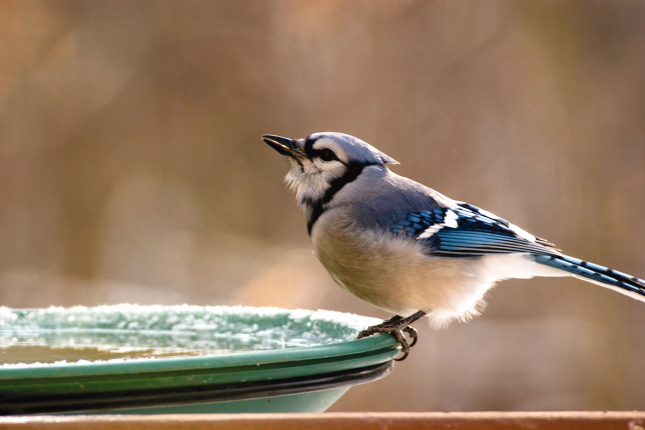
The Wet and Wild Bird Side of Winter
As winter temperatures fall, many people are helping wild birds stay warm by continuing to allow them to take dips in birdbaths.
In addition to drinking, birds need a place to bathe when temperatures fall below freezing. Clean feathers help birds stay warm, and a birdbath with open water is often the only way for some birds to drink and stay clean when it’s extremely cold.
Many bird enthusiasts are using birdbath heaters in their plastic or stone birdbaths to provide water. Some are trying birdbaths with built-in heaters.
Most birdbath heaters are designed to shut-off automatically when the temperature reaches approximately 40-50° F, or when it is out of the water. It is important to understand that as long as there is an opening in the water, the heater is doing its job. The birds only need an opening in the water to be able to drink; so the entire bath does not have to be thawed. During warmer or windy weather, the water will disappear quickly due to increased evaporation.
While it is important to provide birds with water in cold weather, it is also important for owners to take proper care of their birdbaths. Because future problems can occur, birdbaths made from porous materials should not be used during freezing temperatures, even with a birdbath heater.
Most importantly, people should never use heated dog dishes. That can be very dangerous to wild birds because they are too deep, slippery and birds can drown. If someone wants to attract birds during these cold times, there are better, safer ways that are available. Additionally, it is a good idea to use some black electrical tape at the extension cord joint.
My favorite winter scene is a gentle snow falling with the steam rising from the birdbath and my little chickadees in the hot tub. Happy Birdfeeding!
(Kathy and her husband, John, own and operate the Wild Birds Unlimited, located in Billings and at www.wbu.com/billings. She is a Certified Bird Feeding Specialist and is past president of the Yellowstone Valley Audubon Society).

